PRICING
SERVICES
DIGITAL MARKETING SERVICES
COMPETITIVE ANALYSISSEO SERVICESCONVERSION RATE OPTIMIZATIONWEB DESIGNCONTENT MARKETINGPAY PER CLICKRESOURCES
Let's explore the world of Full Stack Developers and discover what makes them so essential to modern tech teams. As professionals capable of handling both front-end and back-end development, they play a pivotal role in bridging user experience with technical functionality. But what exactly sets them apart, and why are they in such high demand? Join us as we uncover the skills, tools, and challenges that define this versatile role.

When we talk about the role of a Full Stack Developer, we're diving into a position that's both versatile and thorough.
We engage in both front-end and back-end development, bridging the gap between user experience and server logic. Our role requires us to understand how each aspect of web development interacts, ensuring seamless functionality across the entire stack.
We often juggle a variety of tasks, from designing user interfaces to managing databases.
As full-stack developers, we need a robust set of skills to effectively handle the diverse demands of our role.
First, proficiency in both front-end and back-end development is vital. This means we should be comfortable with HTML, CSS, and JavaScript for the front-end, alongside server-side languages like Python, Ruby, or Node.js. Understanding databases, both SQL and NoSQL, allows us to manage and manipulate data efficiently.
Moreover, we should grasp design principles to guarantee user-friendly interfaces. Our role also requires problem-solving skills for debugging and optimizing code. Communication is another key skill since we often collaborate with different teams.
Finally, adaptability is essential as technology evolves rapidly. By mastering these skills, we’re equipped to build seamless, end-to-end solutions.
To excel as Full Stack Developers, we rely on a suite of essential tools and technologies that streamline our workflow and enhance productivity.
We embrace version control systems like Git to manage code changes collaboratively. Front-end frameworks such as React or Angular empower us to build dynamic interfaces efficiently.
On the back-end, Node.js and Express.js enable us to create robust server-side applications. We use databases like MongoDB or PostgreSQL for data management.
DevOps tools like Docker and Kubernetes facilitate application deployment and scaling. For debugging, tools like Chrome DevTools are invaluable.
Additionally, we often utilize IDEs like Visual Studio Code to write and edit code seamlessly. These technologies form the backbone of our development process, ensuring our projects are both effective and efficient.
Maneuvering the landscape of full-stack development comes with its fair share of challenges, yet these obstacles push us to grow and refine our skills.
We constantly juggle multiple technologies and frameworks, which can be overwhelming. Staying up-to-date with rapid technological advancements is essential, but it often feels like a never-ending task.
We face the complexity of integrating front-end and back-end systems, ensuring they communicate seamlessly.
Debugging is another hurdle, as issues can arise anywhere in the stack, demanding our attention and problem-solving skills.
Time management is key, as we balance diverse responsibilities. Additionally, the pressure to deliver efficient, scalable, and user-friendly applications can be intense.
However, these challenges strengthen our capabilities and keep us engaged in our ever-evolving field.

Despite the hurdles we face, our skills as full-stack developers are in high demand. Companies crave the versatility we bring, allowing them to streamline processes by having one team member handle both front-end and back-end development.
This demand stems from the increased need for efficient, cohesive solutions in a rapidly evolving tech landscape. We provide value by bridging gaps between different technology stacks, ensuring seamless integration and functionality.
As technology advances, businesses seek developers who can adapt quickly and understand the full range of development. Our ability to work across various platforms makes us invaluable.
We're not just coding; we're shaping the future of digital experiences. As more industries embrace digital transformation, the need for our extensive skill set only grows stronger.
In summary, we've seen that Full Stack Developers play an essential role in today’s tech landscape. They’re the linchpins who guarantee seamless integration between the front-end and back-end, using their diverse skills and tools. While they face challenges like keeping up with rapid technological changes, the growing demand for their expertise is undeniable. As companies seek efficient and cohesive digital solutions, Full Stack Developers will continue to be indispensable in the industry.
E-commerce web development is all about creating and maintaining the digital spaces where we buy and sell products and services online. We focus on user-friendly design, mobile responsiveness, and secure payment systems. Each element plays an essential role in enhancing the shopping experience and driving sales. But what exactly are the strategies and trends shaping this dynamic field? Let's explore how these elements come together to create successful e-commerce platforms.

When we explore the key elements of e-commerce web development, it’s essential to focus on designing a user-friendly interface that keeps customers engaged.
But that’s just the start. We should also prioritize site performance and security. Fast loading times guarantee that users don’t abandon their carts out of frustration. Implementing robust security measures, like SSL certificates and secure payment gateways, builds trust with our customers.
Furthermore, we can't overlook the importance of mobile responsiveness. Today’s shoppers use various devices, and a seamless experience across all screens is critical.
Let’s also consider the integration of analytics tools. These tools provide insights into user behavior, helping us continually improve our sites.
How do we guarantee our e-commerce website captivates and retains users? We focus on designing user-friendly interfaces that are intuitive and engaging.
First, we make certain our navigation is simple and logical, allowing users to find what they need quickly. Clear calls-to-action guide users effortlessly through their shopping experience.
We also prioritize mobile responsiveness, making sure our site looks and functions well on any device.
Visual appeal is essential, so we use a clean design with consistent branding to create a professional look.
Accessibility is another key element; we ensure our website is usable for everyone, including those with disabilities.
When we integrate secure payment gateways, our top priority is ensuring data encryption to protect our customers' sensitive information.
We must select trusted providers who offer robust security features and reliability.
To guarantee our customers' data remains secure during transactions, integrating secure payment gateways with robust encryption protocols is vital.
Encryption acts as our first line of defense, converting sensitive information into unreadable code during transmission. This guarantees that even if intercepted, the data remains protected from unauthorized access.
Incorporating SSL (Secure Sockets Layer) certificates is significant. They establish an encrypted link between the web server and the browser, guaranteeing all data passed remains private.
Additionally, using protocols like TLS (Transport Layer Security) enhances this security further.
We must also guarantee our payment gateways comply with PCI DSS (Payment Card Industry Data Security Standard) requirements.
This compliance guarantees that our customers' payment information is handled with the highest security standards, maintaining trust and confidence.
Why is choosing the right payment gateway provider so vital for our e-commerce platform? It’s because a secure and reliable payment gateway guarantees that transactions are processed smoothly and securely.
When we select a trusted provider, we’re not just facilitating financial transactions; we’re building trust with our customers. A reputable provider protects sensitive data, reducing the risk of fraud, which is essential for maintaining our customers’ confidence.
We should also consider the ease of integration. A good payment gateway should seamlessly integrate with our platform, supporting various payment methods to meet diverse customer preferences.
Furthermore, we need to evaluate the provider's compliance with industry standards, like PCI DSS. By doing so, we’re making sure our platform remains a safe and trustworthy environment for all users.
Creating a seamless user experience is vital in e-commerce, where integrating secure payment gateways plays a significant role. We recognize that when customers reach the checkout process, they expect it to be smooth and trustworthy.
Any hiccups can lead to abandoned carts, which we all want to avoid. By using secure payment gateways, like PayPal, Stripe, or Square, we not only guarantee a secure transaction but also build trust with our customers.
It's essential to select gateways that provide multiple payment options—credit cards, digital wallets, or even bank transfers.
We should confirm these systems aren't only secure but also fast and easy to navigate. By doing so, we enhance the overall shopping experience, encouraging customers to return and make repeat purchases.
As we develop e-commerce websites, guaranteeing mobile responsiveness is essential given the increasing number of users shopping on their phones.
We must prioritize mobile design to provide a seamless experience that can greatly influence our conversion rates.
In today's digital world, where over half of all web traffic comes from mobile devices, guaranteeing mobile responsiveness is more essential than ever for e-commerce success.
We must prioritize mobile design to create seamless experiences that captivate and convert users. When we neglect this, we risk losing potential customers who value ease and efficiency. A responsive design guarantees our site adapts to any screen size, enhancing user satisfaction.
Consider these key benefits:
Guaranteeing our e-commerce site is mobile-responsive begins with thorough testing across devices. We need to remember that customers use a variety of gadgets, from smartphones and tablets to desktops. Each device offers a unique screen size and resolution, requiring us to test how our site displays and functions on all of them.
We should utilize tools like responsive design emulators and actual device testing to identify any issues. This approach helps us guarantee that images resize correctly, buttons are easily clickable, and text remains readable.
Let’s not forget about different operating systems and browsers, as they can affect how our site performs. By testing thoroughly, we can provide a seamless experience for every user, increasing the likelihood of conversions and customer satisfaction.
Although the e-commerce landscape is ever-changing, keeping up with the latest web development trends guarantees our online stores remain competitive and user-friendly.
Embracing these trends helps us deliver a seamless shopping experience that meets our customers' expectations.
So, what trends should we focus on?

To stay ahead in the e-commerce game, adopting the latest web development trends isn't enough. We need to craft a robust strategy that enhances our online presence and drives sales.
First, let’s focus on creating a seamless user experience. A well-designed, intuitive website keeps users engaged and encourages them to explore more.
Next, optimizing our site for mobile users is essential since many shoppers browse and purchase via smartphones.
We should leverage social media platforms to broaden our reach, engaging with potential customers where they spend time.
Additionally, SEO techniques should be a priority, ensuring our products are easily discoverable in search engines.
Finally, personalized marketing through email campaigns and targeted ads can greatly boost our conversion rates, effectively turning browsers into buyers.
In e-commerce web development, we focus on creating user-friendly, secure, and responsive online platforms. By integrating secure payment gateways and ensuring mobile responsiveness, we make shopping easy and safe. Staying updated with the latest trends helps us optimize sites for search engines, driving more traffic and sales. By understanding user behavior through analytics, we continuously enhance the shopping experience. Together, let's build an online presence that stands out and thrives in the competitive marketplace.
As web developers, we've all witnessed the evolution of web technologies and the languages that drive them. But what language should we focus on mastering today? JavaScript certainly stands out due to its widespread use and versatility. However, other languages like Python and PHP have their own unique strengths. With the digital landscape constantly shifting, how do we determine which language truly demands our attention? Let's explore this together.

When evaluating the demand for web development languages, we must consider several core criteria that influence their popularity.
First, ease of learning is essential. If developers can pick up a language quickly, it's more likely to gain traction.
Next, the ecosystem matters. A robust set of libraries and frameworks can enhance a language's appeal by simplifying development tasks.
We also need to examine community support. Active forums and resources make troubleshooting and skill-building more accessible.
Furthermore, job market demand plays a significant role; languages that offer abundant career opportunities naturally attract more learners.
Finally, performance and scalability affect a language's adoption, especially for projects requiring high efficiency.
JavaScript stands as the cornerstone of web development, a language so pervasive it's nearly synonymous with the web itself. We can't overlook its impact: it animates our web pages, enhances user interaction, and supports server-side scripting.
Imagine the web without JavaScript; it's like a world without color. Here’s why it's indispensable:
JavaScript's ubiquity and versatility make it a must-know for developers.
While JavaScript dominates the web, Python offers a revitalizing blend of simplicity and versatility that's hard to ignore. It's a language that doesn't just stop at web development; it extends into areas like data analysis, artificial intelligence, and automation.
Python's clean syntax makes it easy for beginners to grasp, allowing us to focus on solving problems rather than wrestling with the language itself.
In web development, Python shines through frameworks like Django and Flask. These tools help us build everything from simple websites to complex applications efficiently.
Furthermore, Python's vast library ecosystem supports a wide range of functionalities, saving us time and effort. Its cross-platform nature means we can develop on any operating system, making Python a truly flexible choice for developers.
Though often overshadowed by newer languages, PHP remains a cornerstone in server-side scripting, powering a significant portion of the web we interact with daily.
It mightn't have the modern flair of some languages, but it’s reliable and deeply embedded in many online platforms.
Let's visualize PHP's role in our web experience:
Understanding PHP's role helps us appreciate its continued relevance.
How does Ruby fare in the ever-evolving landscape of web development? It's understood that Ruby, especially through its popular framework Ruby on Rails, has carved out a niche by prioritizing developer happiness and productivity. Its elegant syntax allows us to write clean, maintainable code, which appeals to many developers seeking efficiency.
However, the demand for Ruby has seen fluctuations. While it's celebrated for rapid application development, some perceive it as less suitable for large-scale applications compared to other languages like JavaScript or Python.
Ruby's community remains strong, contributing numerous libraries and tools. It's particularly favored for startups and projects requiring quick prototyping.
As we assess Ruby's place, we consider both its strengths and the shifting needs of web development to understand how it fits into today's tech ecosystem.

As we consider the shifting needs of web development, embracing languages that offer both flexibility and robustness becomes paramount. Typescript stands out, providing a strong typing system atop JavaScript, making our code more reliable and easier to debug.
We find that future-proofing our projects involves staying abreast of emerging technologies. Let's explore:
In our exploration of web development languages, we've seen why JavaScript stands out as the most demanding language. Its versatility, supported by powerful frameworks like React and Angular, keeps it at the forefront of web innovation. While Python and PHP offer their unique strengths, JavaScript's ubiquity and cross-platform capabilities can't be ignored. As developers, we should embrace JavaScript's rich ecosystem and consider emerging languages like TypeScript to guarantee our skills remain relevant and future-proof.
When we talk about building websites, we often mention the three fundamental tools: HTML, CSS, and JavaScript. These are the building blocks of web development. HTML gives structure to our content, CSS makes it visually appealing, and JavaScript adds the interactive elements users love. Understanding how these tools work together is essential, and there's more to explore about their individual roles and impact on the web.

HTML, or Hypertext Markup Language, serves as the backbone of all web pages we interact with daily. It provides the vital structure, allowing us to create organized content that browsers display.
When we write HTML, we’re fundamentally crafting the skeleton of a web page, using tags to denote headings, paragraphs, links, images, and more.
Together, we can think of HTML as the framework upon which all web content stands. It guarantees that text and media have a coherent format for browsers to interpret.
Without it, our web pages would lack the foundational elements needed to communicate effectively. As we explore web development, mastering HTML is essential, enabling us to build clear, accessible, and well-structured sites.
While HTML lays the groundwork for our web pages, CSS (Cascading Style Sheets) is what brings them to life with style and color. CSS allows us to separate content from design, making it easier to maintain and update our sites.
By using CSS, we can control the look and feel of multiple pages at once, ensuring consistency across our entire website. It gives us the power to change fonts, colors, and layouts with ease, making our sites more visually appealing and user-friendly.
CSS also enables us to create responsive designs that adapt to different devices and screen sizes, which is essential in today’s mobile-centric world.
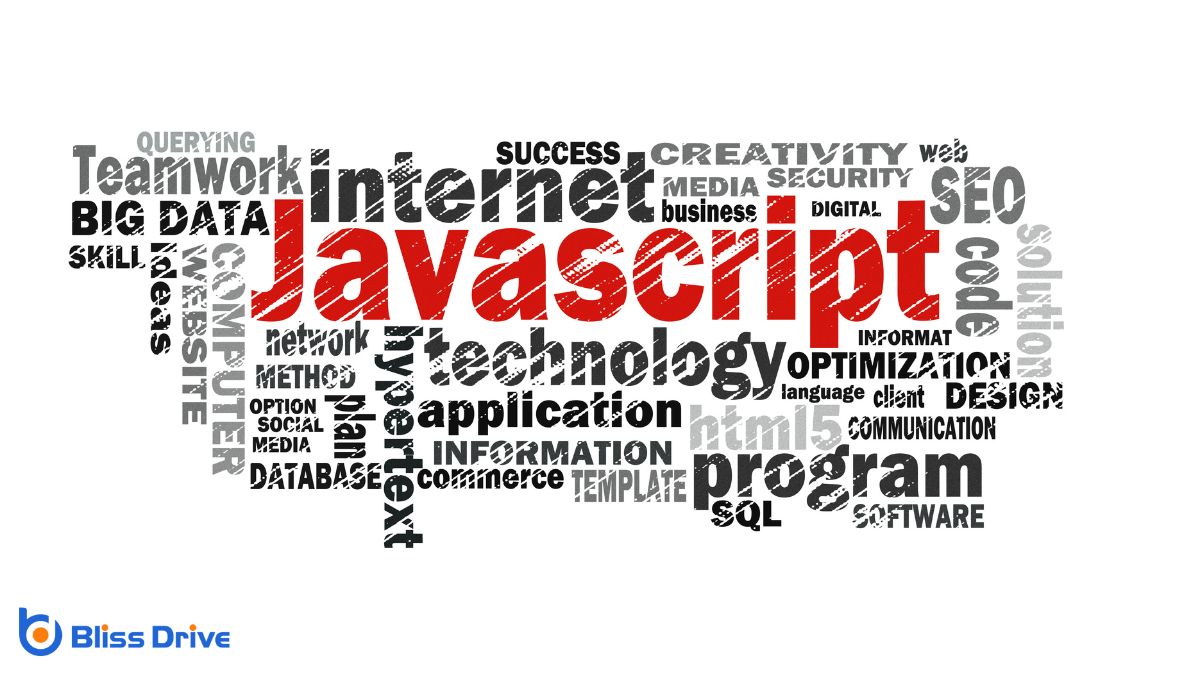
Just as CSS enhances the aesthetic appeal of our websites, JavaScript takes things a step further by adding dynamic interactivity. This scripting language transforms static pages into engaging experiences.
Let's explore how JavaScript enhances our web projects:
In our journey through web development, we've explored the foundational roles of HTML, CSS, and JavaScript. Together, they form the backbone of creating engaging and accessible websites. HTML structures our content, CSS styles it beautifully, and JavaScript adds the dynamic flair that keeps users engaged. By mastering these tools, we can build websites that are not only functional but also visually appealing and interactive. Let's continue honing our skills to craft exceptional web experiences.
When it comes to building a website, we often find ourselves asking, "Do we need a web designer or a developer?" The answer isn't always clear-cut and depends on our project's specific needs. Are we aiming for a visually stunning site, or do we need complex functionality? Let's explore how to make the right choice and guarantee our website not only looks great but also performs seamlessly.
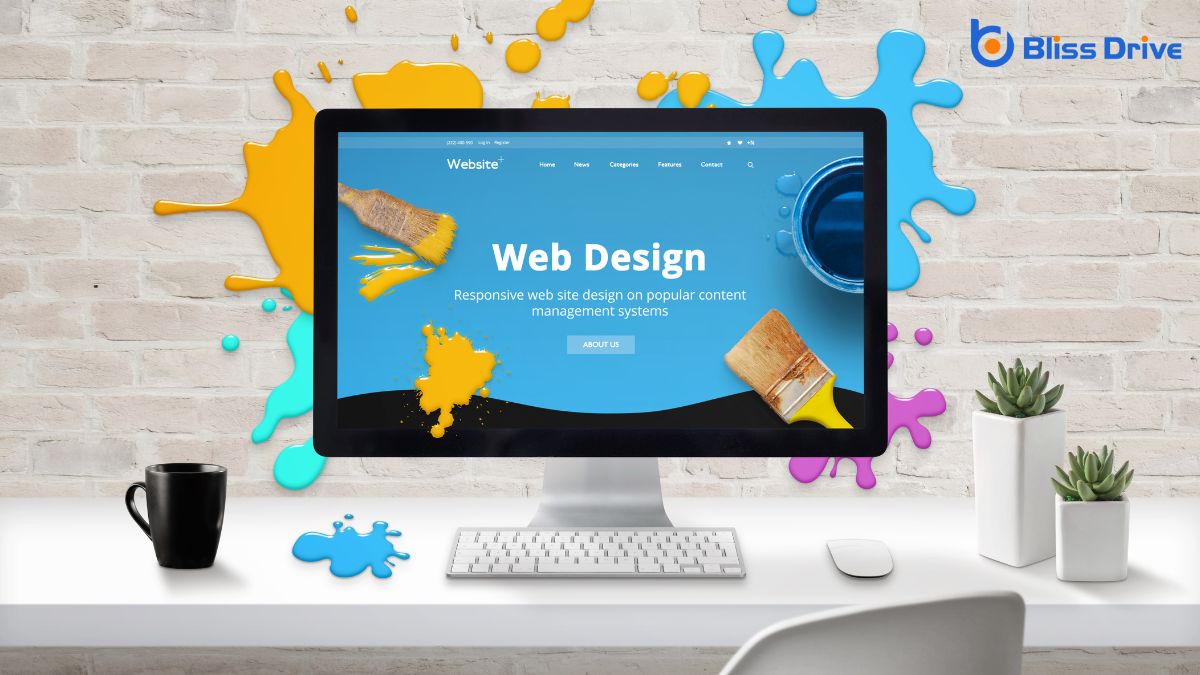
When it comes to building a website, it's crucial to understand the distinct roles of web designers and developers. We might wonder, what's the difference?
Web designers focus on the visual aspects, crafting a site's look and feel. They make certain our site is visually appealing and user-friendly. Designers use tools like Photoshop and Sketch to create layouts and color schemes.
On the other hand, web developers bring these designs to life. They write the code that makes our website functional. Developers work with programming languages like HTML, CSS, and JavaScript.
They guarantee everything runs smoothly, from navigation menus to contact forms.
How do we determine what kind of website we need? First, let's identify our website's primary purpose. Are we looking to showcase our portfolio, sell products, or provide information? Our goals will guide the features and functionality required.
Next, consider our target audience. Who'll visit our site, and what do they expect? Understanding their needs helps us prioritize content and design elements.
Let’s also think about scalability. Will our website need to grow as our business expands? This consideration impacts the technology and platforms we choose.
Finally, budget and timeline play vital roles. Knowing how much we can spend and when we need the site ready helps us decide between essential features and potential enhancements.
Having a clear vision for our website sets the stage for the next big decision: choosing between DIY platforms and hiring professionals.
DIY platforms like Wix, Squarespace, and WordPress offer user-friendly interfaces that allow us to build sites without coding knowledge. They're cost-effective and provide customizable templates to fit our needs.
However, they might limit our site's uniqueness and functionality if we lack design expertise.
On the other hand, hiring professionals can bring our vision to life with custom designs and advanced features.
Web designers and developers possess the skills to create tailored solutions that align perfectly with our brand.
While this option often costs more, it provides a personalized touch and technical expertise that DIY platforms may not offer.
Let's weigh our priorities and decide accordingly.
Why is determining our budget and resources essential in the decision-making process?
It helps us make informed choices, guaranteeing that we align our project's goals with our financial and material capabilities. Knowing our limits prevents overspending and guides us toward the most suitable option.
Here's how we can effectively assess our budget and resources:
Understanding these aspects guarantees our project remains feasible and successful.

Choosing between a web designer and a developer for our project can feel overwhelming, but clarity comes with understanding our project's specific needs.
Let's start by asking ourselves: Is our focus more on aesthetics or functionality? If we need an engaging visual layout that captures our brand, a web designer is crucial. They craft user-friendly interfaces that enhance user experience.
However, if our project requires complex features, databases, or backend support, a developer is our go-to. They build the infrastructure that powers our site.
Sometimes, projects demand both skills. In such cases, hiring a team or a full-stack developer who bridges the gap can be beneficial.
In deciding whether to hire a web designer or developer, we need to assess our project's unique needs. If we're aiming for an eye-catching design and smooth user experience, a designer's touch is vital. For complex features and backend work, a developer's skills are essential. Balancing aesthetics and functionality might require both, or a versatile full-stack developer. Ultimately, let's consider our goals, resources, and budget to make the best choice for our website's success.
When we talk about web development, we often focus on design and functionality, but there's another vital element we can't ignore: SEO. Integrating SEO into web development is more than just a trend; it's essential for visibility and success. How do these two worlds blend seamlessly, and what impact does this integration have on the effectiveness of a website? Let's uncover the ways SEO is intertwined with web development.
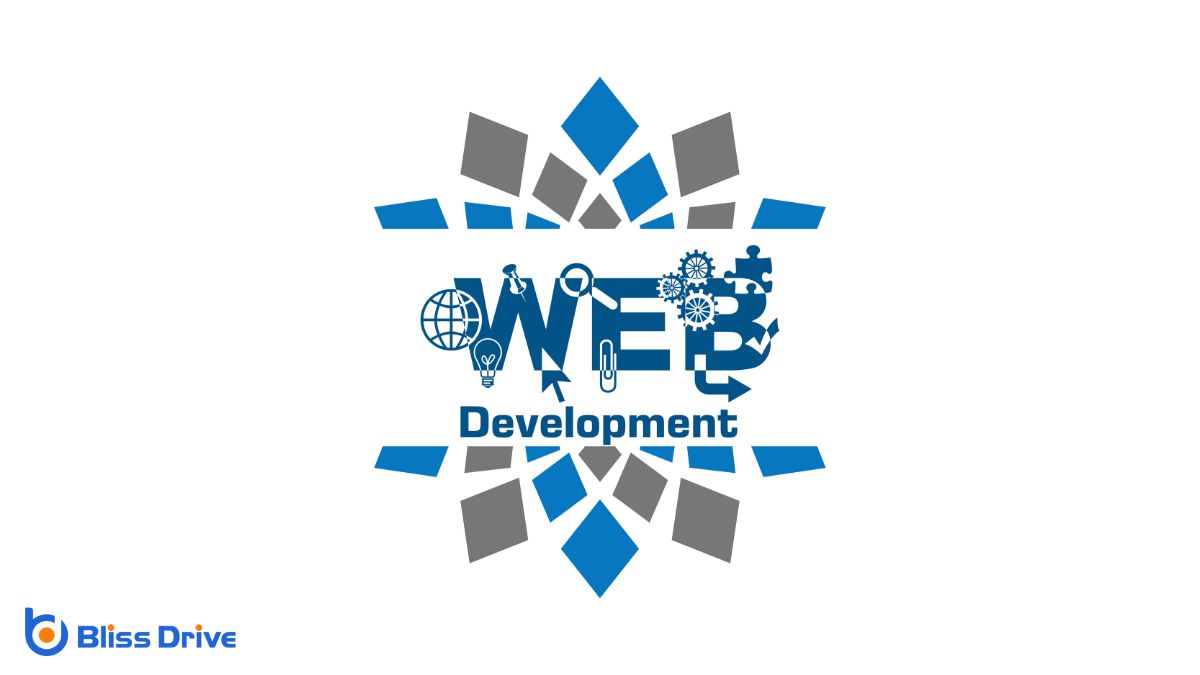
When we explore web development, we’re diving into the art and science of building websites that are both functional and visually appealing. Our journey begins with understanding the fundamental components: HTML for structure, CSS for styling, and JavaScript for interactivity.
These technologies form the backbone of any website, allowing us to create engaging user experiences.
As we investigate deeper, we discover the importance of responsive design. This guarantees our websites look great on any device, from desktops to smartphones. Our goal is to create seamless navigation and intuitive interfaces that keep visitors engaged.
Additionally, web development involves server-side programming and database management, which help us build dynamic, data-driven sites. Together, these elements empower us to craft sites that captivate and inform our audience.
As we explore the core principles of SEO, we'll focus on understanding search engine algorithms and the basics of keyword optimization.
Search engines use complex algorithms to rank web pages, and knowing how they work helps us improve our site's visibility.
How do search engine algorithms shape the landscape of SEO? They’re at the heart of everything we do in web development and optimization.
These complex systems determine how search engines rank websites based on countless factors. Algorithms evaluate site relevance, authority, and user experience, ensuring users find the most accurate information quickly.
Understanding these algorithms helps us create content that ranks well. We can focus on site structure, loading speed, and mobile-friendliness—elements that algorithms prioritize.
Staying informed about updates is essential because search engines constantly refine these algorithms to improve user satisfaction.
Keyword optimization is the backbone of effective SEO strategies. It guarantees our content reaches the right audience by using terms they search for.
Let’s explore the basics, which are vital for anyone looking to enhance their website's visibility.
Incorporating these basics can greatly boost our SEO efforts.
Web development and SEO are closely intertwined, influencing how effectively a website can be both built and discovered. As we develop websites, it’s essential to think about how search engines perceive and rank our pages.
While web developers focus on creating functional and visually appealing sites, SEO guarantees that these sites reach their intended audience by optimizing for search engines. Our task as developers is to integrate SEO best practices from the start, making sure that the website's structure, speed, and content align with search engine guidelines.
As we work on web development, focusing on URL structure optimization and mobile-friendly design is vital for effective SEO.
A clean, logical URL structure helps search engines understand and index our site better, improving visibility.
Meanwhile, ensuring a mobile-friendly design is essential since more users access the web on their phones, impacting both user experience and search rankings.
Although often overlooked, optimizing URL structure is a crucial aspect of SEO during web development. Let’s make sure our URLs aren't just readable, but also meaningful and efficient. A well-structured URL can greatly improve user experience and search engine ranking.
Here’s how we can enhance our URL structure:
In today's digital landscape, mobile-friendly design is paramount for effective SEO during web development. As more users access websites via smartphones, we must guarantee our sites are optimized for smaller screens. A responsive design isn't just preferred; it's a necessity.
Google prioritizes mobile-first indexing, meaning our sites' mobile versions are considered first when determining rankings.
We should focus on fast loading times, intuitive navigation, and easily readable text. Ensuring images and videos scale properly prevents user frustration, keeping visitors engaged. By implementing these elements, we enhance user experience and boost our SEO performance.
Let’s remember, a mobile-friendly design isn't an add-on; it’s integral to our web development process, guaranteeing our sites remain competitive and accessible to all users.
While web development and SEO are often intertwined, many projects still fall prey to common SEO mistakes that can hinder a site's performance. Recognizing these pitfalls helps us build more effective websites.
To effectively incorporate SEO into web development, we must leverage the right tools and techniques that enhance a website's search performance.
First, using tools like Google Analytics and Google Search Console helps us track and analyze site performance, providing insights into what needs improvement. We should also focus on optimizing page speed with tools like GTmetrix or PageSpeed Insights, as faster sites rank better.
For keyword research, tools such as SEMrush or Ahrefs can guide us in identifying relevant keywords that match our audience's search intent.
Additionally, leveraging schema markup helps search engines understand our content better, improving visibility.
Let's not forget mobile optimization; using responsive design guarantees our site works seamlessly across devices, which is vital for ranking high in search results.
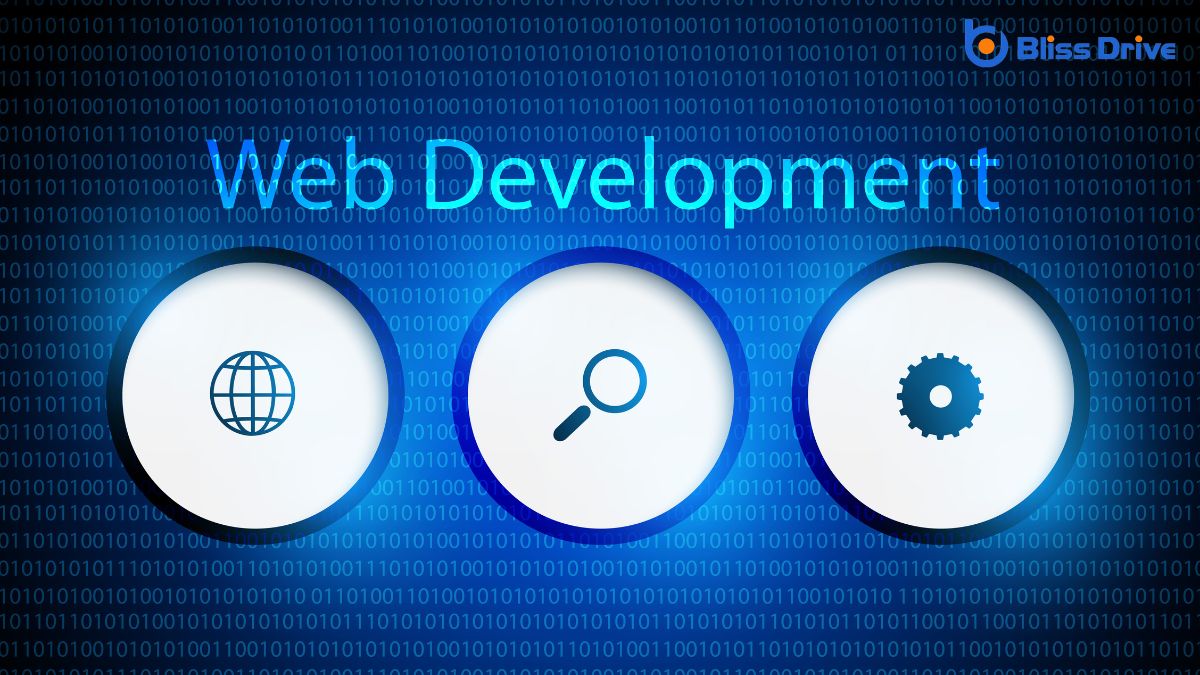
As we harness these current tools and techniques to boost our site's search performance, it's important to look ahead at how SEO will evolve within web development. This future promises exciting advancements, and we must be prepared for the changes ahead.
Here are three key areas of anticipated growth:
In web development, we can't overlook the synergy between SEO and creating robust websites. By integrating SEO principles from the start, we're not just building sites; we're crafting user-friendly experiences that rank well in search engines. Let's avoid common pitfalls and utilize effective tools to guarantee our projects are successful. As we move forward, embracing SEO in our development processes will be essential for staying competitive and delivering exceptional results for our businesses and users.
As SEO professionals, we often wonder if web development skills are crucial to our role. While understanding the basics of SEO is fundamental, having a grasp of web development can take our optimization strategies to the next level. It empowers us to implement technical solutions and troubleshoot issues that could impact rankings. So, is learning web development the key to revealing our full potential in SEO? Let's explore the possibilities.
Understanding the basics of SEO and web development is essential if we want to improve our website's performance.
SEO, or search engine optimization, involves optimizing our website to rank higher on search engine results pages. This requires us to understand keywords, meta tags, and content structure.
On the other hand, web development focuses on the creation and maintenance of websites, ensuring they’re functional and user-friendly.

Let's explore how web development impacts site speed, focusing on optimizing code efficiency and using image compression techniques.
When we streamline our code and compress images effectively, we can greatly boost our site's loading time.
A critical aspect of web development that directly impacts SEO is code efficiency, which plays a significant role in determining site speed. When our website's code is clean and streamlined, it loads faster, providing users with a smoother experience.
We can achieve this by minimizing unnecessary code, reducing file sizes, and avoiding excessive use of scripts. For instance, removing duplicate CSS rules and consolidating JavaScript files can drastically cut down load times.
Moreover, leveraging tools like minifiers helps compress our code, making it more efficient without losing functionality. As we optimize our code, we not only enhance user experience but also improve our search engine rankings.
Fast-loading pages are favored by search engines, which means better visibility for our site. Let’s prioritize code efficiency for SEO success.
Images often serve as a double-edged sword in web development—while they add visual appeal and engagement, they can also slow down site speed if not handled properly.
To keep our sites fast, we must focus on image compression techniques. This guarantees that our content loads quickly, improving the user experience and our SEO rankings.
Here’s how we can effectively compress images:
Let's explore why mobile responsiveness is essential for SEO success.
When our websites are mobile-friendly, we not only improve user experience but also boost our search rankings, as search engines prioritize sites that cater to mobile users.
While the digital landscape continues to evolve, guaranteeing our websites are mobile-friendly has become more imperative than ever for SEO success. Mobile responsiveness directly impacts how users experience our sites, influencing engagement and retention.
It's essential to focus on creating designs that adapt seamlessly to different screen sizes and devices. Here’s why we need to prioritize mobile-friendly design:
As we explore the impact of mobile responsiveness on search rankings, it's clear that search engines prioritize sites that offer ideal experiences across all devices.
Our digital landscape is increasingly mobile-centric, and search engines, like Google, have adapted by using mobile-first indexing. This means they often rank sites based on their mobile version, making responsiveness essential for our SEO strategy.
Incorporating a responsive design isn’t just about aesthetics; it's about functionality and accessibility.
When our site smoothly adapts to different screen sizes, we enhance the user experience, which can directly influence our rankings.
Let’s guarantee our site content is easy to navigate and interact with on mobile devices. By doing so, we align with search engines’ priorities and improve our visibility in search results.
Understanding the role of mobile responsiveness in SEO, we recognize that user experience and engagement are at the heart of successful digital strategies. When a website is mobile-responsive, it not only looks good on various devices but also functions smoothly, keeping users engaged.
Here’s how mobile responsiveness impacts SEO:
Although it might seem intimidating, implementing structured data is essential for boosting our search visibility. Structured data helps search engines understand our content better, allowing them to present it more attractively in search results. By adding structured data, we can enable rich snippets, like star ratings, pricing, and more, which make our listings stand out.
We don’t need to be coding experts to use structured data effectively. Tools like Google’s Structured Data Markup Helper guide us through the process, making it more accessible.
We can start with simple schemas for articles, products, or events and gradually build our skills. Implementing structured data might require a bit of learning, but it’s a valuable investment in improving our site’s visibility and attracting more visitors.

While many factors contribute to a website's success, enhancing user experience through web development plays an essential role in keeping visitors engaged and coming back.
By focusing on user-centric design, we can create a seamless, enjoyable experience that encourages users to explore further.
Here are three ways we can improve user experience through effective web development:
Let's prioritize these elements for a compelling user experience!
Enhancing user experience through web development naturally sets the stage for another critical aspect of online success: technical SEO. When we focus on technical SEO, we're looking at the website's behind-the-scenes elements that help search engines crawl and index our content effectively.
By leveraging web development, we can optimize site speed, implement structured data, and guarantee mobile-friendliness—all of which are key ranking factors.
We should prioritize making our website's architecture clean and efficient. This means reducing unnecessary code and guaranteeing our site is easily accessible to both users and search engines.
Additionally, optimizing image sizes and leveraging browser caching are simple web development strategies that greatly boost our site's performance. These technical enhancements directly influence how search engines perceive and rank our site, driving more organic traffic.
As we explore the impact of web development on website security, it's crucial to understand how foundational coding practices can safeguard our online presence.
By integrating security measures into our web development process, we can protect sensitive data and maintain user trust.
Here are three key practices:

Mastering web development skills can give us a significant advantage in today's digital landscape. By understanding the technical aspects of how websites function, we're able to optimize our sites more effectively for search engines, leading to improved rankings.
This knowledge enables us to create faster, more responsive sites that enhance user experience, which is a critical factor in SEO success.
Moreover, possessing web development skills allows us to implement advanced SEO strategies directly, such as schema markup or custom meta tags. It empowers us to troubleshoot issues quickly without relying solely on external help, saving both time and resources.
As we continue to adapt to the ever-evolving digital environment, these skills guarantee we remain competitive and relevant in our online endeavors.
In today’s digital landscape, honing our web development skills gives us a competitive edge in SEO. By understanding website architecture and coding, we can boost site speed, guarantee mobile responsiveness, and implement structured data effectively. These skills enhance user experience and strengthen site security, which is essential for maintaining high search rankings. Let’s embrace web development as an indispensable tool in our SEO toolkit, empowering us to optimize websites more effectively and stay ahead in the ever-evolving digital world.
When we think about creating a website, we often hear about web designers and web developers, but what's the real difference between the two? As professionals, we recognize that while designers focus on aesthetics and user experience, developers handle the technical build and functionality. This distinction is essential because it influences the final product. But how do these roles work together to create seamless online experiences? Let's explore the intricacies of this collaboration.
When we think about web design, we're diving into the artistic and user-focused side of website creation. It's about crafting a visually appealing interface that captivates users while ensuring their journey through the site is smooth and intuitive.
As designers, we consider color schemes, typography, layout, and overall aesthetics. Our goal is to create a cohesive visual identity that resonates with a site's purpose and audience.
We use tools like Adobe XD, Sketch, and Figma to bring our ideas to life, prototyping and iterating until we achieve the desired look and feel.
Accessibility and responsiveness are priorities; we want our designs to work seamlessly across all devices. By understanding users' needs, we create engaging experiences that keep them coming back.

As we explore web development, let's understand the vital aspects of web programming that form the backbone of any website.
We'll differentiate between backend and frontend roles, each with its own unique responsibilities and challenges.
Together, we'll also get familiar with the essential development tools that make building and maintaining websites efficient and effective.
Web programming serves as the backbone of web development, turning designs into fully functional websites. It involves writing and maintaining the code that makes our websites tick.
When we plunge into web programming, we engage with languages like HTML, CSS, and JavaScript, which form the pillars of any web project. HTML structures our content, CSS styles it, and JavaScript adds interactivity, making our sites dynamic and engaging.
We can think of web programming as a translator that converts creative designs into a language browsers understand. This process guarantees that users enjoy seamless experiences across devices.
Having grasped the fundamentals of web programming, we can now explore the distinct roles within web development: backend and frontend.
These roles are essential for bringing websites to life, each with its unique focus and responsibilities.
Frontend development is all about what users see and interact with. It involves:
1. Design Implementation: Translating visual designs into code using HTML, CSS, and JavaScript.
2. User Experience (UX): Ensuring intuitive and responsive interfaces.
Backend development, on the other hand, powers the behind-the-scenes functionality.
It encompasses:
3. Server Logic: Managing databases, server-side programming, and ensuring data flows smoothly between server and user.
Steering the world of web development requires a solid set of tools that streamline our workflow and enhance productivity.
First, we rely on code editors like Visual Studio Code or Sublime Text, which offer intuitive interfaces and extensions to boost coding efficiency. Version control systems, such as Git, help us track changes and collaborate seamlessly with others. For debugging, browser developer tools are indispensable, providing insights into performance and errors.
Additionally, task runners like Gulp or Webpack automate repetitive tasks, saving us time. We also use frameworks and libraries like React or Angular to build robust, scalable applications.
Finally, testing tools guarantee our code functions as expected. By mastering these tools, we can develop dynamic web solutions efficiently and effectively.
When venturing into the domain of web design, understanding key skills is vital for creating visually appealing and functional websites.
Our focus should be on mastering these significant areas:
While web designers focus on aesthetics, web developers bring websites to life with functionality and interactivity. To achieve this, we need several essential skills.
First, proficiency in programming languages like HTML, CSS, and JavaScript is critical. These form the foundation of web development, allowing us to create dynamic and responsive sites.
We also need problem-solving skills to tackle challenges and guarantee smooth operation across different browsers and devices. Understanding databases, like SQL, helps manage and retrieve data efficiently.
Familiarity with version control systems, such as Git, aids in tracking changes and collaborating with other developers.
Finally, strong communication skills are fundamental for working with designers and stakeholders, making sure that everyone’s vision aligns and the project meets its goals.

To create visually appealing and user-friendly websites, we rely on a variety of tools and technologies tailored for designers.
These tools help us transform ideas into digital realities and guarantee every design element aligns with user needs.
Here are three essential tools we often use:
When we explore development tools and technologies, it's vital to understand the distinction between design and development tools.
We'll look into the differences between frontend and backend technologies that power websites.
Additionally, discussing popular frameworks and libraries will help us see how they enhance the capabilities of web developers.
The distinction between design and development tools is essential for understanding the unique roles in creating a website.
As web designers, we focus on aesthetics and user experience, using tools that enhance creativity. Our toolbox often includes:
On the development side, web developers turn designs into functional websites. They rely on tools that build, test, and deploy code.
These include:
Understanding these tools helps us appreciate the distinct contributions of designers and developers.
Having explored the tools that differentiate designers from developers, let's focus on the technologies that define frontend and backend development.
Frontend technologies are what users interact with directly. Here, we utilize HTML, CSS, and JavaScript to create the visual and interactive elements of a website. These technologies guarantee that our websites are responsive, user-friendly, and visually appealing.
On the other hand, backend technologies handle the server-side operations that users don't see. This is where we employ languages like PHP, Python, Ruby, and databases such as MySQL to manage data and server logic.
Backend development guarantees that everything functions smoothly behind the scenes, providing a seamless experience for users. By understanding both frontend and backend technologies, we can create thorough, highly functional web applications.
As we plunge into popular frameworks and libraries, let's explore how they streamline the web development process. These tools help us build functional, visually appealing websites more efficiently. They provide reusable code, which speeds up development and reduces errors.
Here are three popular choices:
These tools enhance productivity and deliver seamless user experiences.
When web designers and developers join forces, they create a website that's both visually appealing and highly functional. We must communicate effectively, guaranteeing our design goals and technical capabilities align.
Designers focus on aesthetics, user experience, and branding, while developers concentrate on coding, security, and performance. It's essential to respect each other's expertise and solicit feedback during the process.
We can use collaborative tools like design mockups and version control systems to streamline our workflow. Regular meetings help us address challenges and find solutions together.

Exploring career paths in web design and development opens up a world of opportunities for us.
Whether we’re drawn to the creative side or the technical aspects, there’s something for everyone. As we immerse ourselves in this field, we’ll find a variety of roles that cater to different skills and interests:
With so many career paths in web design and development available, selecting the right professional for our specific needs can make all the difference.
We need to understand what each role entails. A web designer focuses on aesthetics, crafting a site's look and feel. They guarantee that our website is visually appealing and user-friendly.
On the other hand, a web developer takes care of the technical aspects. They bring the designer's vision to life by writing code and guaranteeing functionality.
To choose wisely, let's assess our project requirements. If our priority is a visually stunning, brand-consistent website, we should hire a designer.
If we need complex functionality or backend development, a developer is the right choice. Understanding these roles helps us make informed decisions.
In conclusion, we’ve explored the distinct roles of web designers and web developers, highlighting their unique skills and tools. Designers focus on creating an engaging user experience, while developers bring functionality to life. By collaborating effectively, they guarantee a seamless and visually appealing web presence. When selecting a professional for your project, consider what you need most—creative design or technical development. Together, these experts can craft a website that meets both aesthetic and functional goals.
When considering which degree is best for web development, we should think about our career goals and interests. A Computer Science degree offers a broad foundation in programming and problem-solving, which is ideal for diverse tech careers. On the other hand, specialized web development programs focus on the practical skills needed for the field. But which path truly sets us up for success? Let’s explore the options to find out.
When we immerse ourselves in the world of web development, understanding its basics is crucial. We need to grasp the core technologies: HTML, CSS, and JavaScript. HTML structures our web pages, CSS styles them, and JavaScript adds interactivity. These three pillars form the foundation of any website we create.
As web developers, we must also familiarize ourselves with responsive design to guarantee our sites look great on any device.
We should explore version control systems like Git, which help track changes and collaborate efficiently. Additionally, understanding the basics of web hosting and domain management is essential for deploying our projects.

Having grasped the basics of web development, we might consider how to further our education and skills. A computer science degree offers a solid foundation, providing extensive knowledge in programming, algorithms, and data structures. These are vital for creating efficient, scalable web applications.
By studying computer science, we gain exposure to various programming languages and frameworks, enhancing our adaptability in a rapidly evolving field.
Moreover, computer science programs often include coursework on problem-solving and analytical thinking, which are essential for debugging and optimizing web solutions. We also explore topics like databases and networking, integral components of web development.
Engaging with a computer science curriculum not only bolsters our technical skills but also prepares us for diverse roles within the tech industry.
As we consider the role of information technology in web development, we can't ignore the growing demand for IT skills in the industry.
Tech innovations are rapidly changing how we approach web projects, making it essential for us to stay updated with the latest tools and trends.
In the dynamic field of web development, a handful of IT skills are vital to stay competitive and relevant. First and foremost, we must master coding languages like HTML, CSS, and JavaScript, the backbone of web creation.
Understanding frameworks and libraries such as React or Angular can streamline our workflow and enhance user experience. Additionally, proficiency in version control systems like Git is essential for collaborating on projects efficiently.
Beyond coding, knowledge of database management, particularly SQL and NoSQL databases, can greatly boost our value as developers. Familiarity with basic cybersecurity practices guarantees the sites we create are secure and trustworthy.
Finally, adaptability remains key; staying updated with evolving technologies and methodologies allows us to deliver innovative and effective web solutions.
While technology keeps advancing at a rapid pace, it's reshaping the landscape of web development dramatically.
We've seen a shift in how we build, design, and manage websites. Innovations like artificial intelligence, machine learning, and responsive design have become integral in creating seamless user experiences. These tools help us personalize content and guarantee our websites perform efficiently across all devices.
Incorporating the latest tech trends in web development requires us to stay updated and adaptable.
The rise of no-code and low-code platforms means that we're now empowered to create complex applications without extensive programming knowledge. This democratization of web development allows more of us to participate in creating dynamic digital experiences, highlighting the ever-growing importance of information technology in our field.
One exciting path for aspiring web developers is enrolling in specialized web development programs. These programs focus intensely on the skills and technologies we need in the ever-evolving digital landscape. They offer targeted courses in front-end and back-end development, ensuring we master essential programming languages like HTML, CSS, JavaScript, and more.
By enrolling, we gain hands-on experience through practical projects, which help us build a robust portfolio vital for job hunting.
Moreover, these programs often provide mentorship from experienced industry professionals, giving us insights and guidance that traditional degree programs mightn't offer.
Because they're specifically tailored for web development, they can accelerate our learning, making us job-ready faster than some broader computer science degrees. This targeted approach helps us stay competitive in the job market.

Having explored specialized web development programs, we now consider the learning environment that best suits our needs: online or in-person.
Online learning offers flexibility, allowing us to balance studies with other commitments. It enables us to learn at our own pace and access a wealth of resources from anywhere. However, it requires strong self-discipline and time management skills.
In-person learning, on the other hand, provides direct interaction with instructors and peers, fostering a collaborative learning atmosphere. It offers immediate feedback and hands-on experience, which can be invaluable in understanding complex concepts. Yet, it demands a fixed schedule and travel time.
Ultimately, our choice hinges on personal preferences, lifestyle, and learning style. Both paths have unique advantages, so let's weigh them carefully.
When we're exploring options for a career in web development, industry certifications can be a valuable asset.
They often provide practical skills and can sometimes be more relevant than a degree in rapidly changing tech fields.
Let's consider how these certifications stack up against a traditional degree.
Many of us wonder if industry certifications hold real value in the world of web development. Let’s consider what they offer.
Certifications can demonstrate our commitment to staying current with industry trends and technologies. They often cover practical skills that employers value, like proficiency in specific programming languages or frameworks. This can help us stand out in a competitive job market.
Furthermore, earning a certification often involves rigorous testing or coursework, proving our dedication and ability to learn. It can also give us a structured path to develop our skills.
Networking opportunities often come hand-in-hand with certification programs, connecting us with industry professionals who can offer guidance and advice.
Fundamentally, certifications can be a valuable asset in our web development careers.
While certifications offer significant benefits, we often find ourselves comparing them to traditional degrees in web development. Both pathways have merit, but they serve different purposes. Degrees provide a thorough foundation, teaching us a broad range of skills and theories. They also offer networking opportunities and a structured learning environment.
On the other hand, certifications focus on specific skills and technologies, allowing us to quickly gain expertise in particular areas. Employers might value degrees for their depth, but certifications can demonstrate current, relevant skills in a fast-evolving field.
It’s essential to evaluate our career goals. If we aim for specialized roles or want to switch technologies swiftly, certifications might be ideal. A degree might suit those seeking a broad, long-term foundation.
Maneuvering the myriad of educational options for web development can feel overwhelming, but evaluating bootcamps and short courses is a practical starting point. These programs often promise rapid skill acquisition, focusing on the essentials of coding and current industry practices.
They’re typically shorter and more intensive than traditional degrees, allowing us to delve into coding languages, frameworks, and tools swiftly.
When considering these options, we should assess curriculum, instructor expertise, and alumni success stories. Some bootcamps offer job placement assistance, which can be a significant advantage.
However, it's vital to verify the program's credibility and alignment with our career goals. By doing our homework, we can decide if a bootcamp or short course aligns with our aspirations in web development.

A crucial aspect of mastering web development is finding the right balance between theory and practical skills.
It's understood that theory lays the groundwork for understanding concepts like algorithms, data structures, and design principles. Yet, without hands-on experience, these concepts can seem abstract and hard to apply.
To excel in web development, we must integrate both aspects. Let’s immerse ourselves in coding projects, internships, and real-world scenarios to apply what we learn in class.
Engaging in practical work helps reinforce theoretical knowledge and sharpens problem-solving skills.
We should continually seek opportunities to practice, whether it’s building personal projects or contributing to open-source.
When planning our academic path, it’s essential to align our education with our career goals in web development. We need to identify the skills employers seek and focus on degrees that offer those competencies.
For instance, a Computer Science degree offers a strong foundation in coding and problem-solving, whereas a Web Development degree might provide more specialized technical skills and design knowledge.
Let’s also consider hands-on experiences, like internships or projects, that enhance our resumes. We should seek programs that incorporate these opportunities.
In our journey to find the best degree for web development, we've explored various educational paths. Whether we choose a Computer Science degree for its broad tech foundation or a specialized web development program for quick job readiness, the key is balancing theory with hands-on experience. Let's not forget industry certifications, bootcamps, and short courses, which can enhance our skills. Ultimately, aligning our education with our career goals will guide us to success in this ever-evolving field.
As web designers, we've all encountered the challenge of choosing the right tools for our projects. While Adobe Photoshop remains a cornerstone for its robust capabilities, many of us have also embraced Sketch and Adobe XD for their intuitive UI/UX features. Figma's real-time collaboration is a game changer, and platforms like WordPress and Webflow simplify development tasks. But how do we decide which tool best fits our needs? Let's explore this together.
Adobe Photoshop has long been a cornerstone in the world of web design, offering unparalleled tools and flexibility for designers. We've relied on its capabilities to bring our creative visions to life, transforming concepts into digital realities.
With its powerful features, we can manipulate images, create graphics, and design layouts that captivate audiences. The layers and masks let us control every detail, ensuring precision and consistency in our projects.
While some might view it as primarily for photo editing, Photoshop's versatility extends far beyond. We can mock up entire websites, experimenting with color schemes, typography, and imagery.
Its integration with other Adobe applications enhances our workflow, making collaboration seamless. By mastering Photoshop, we elevate our web design skills, delivering professional and compelling digital experiences.

While many tools have emerged in the UI/UX design landscape, Sketch stands out as a favorite among designers. It’s not just because of its sleek interface and intuitive design, but also due to its powerful vector editing capabilities.
We appreciate how Sketch simplifies creating complex layouts, offering precision without complication. The tool's extensive library of plugins enhances our productivity, allowing seamless integration with other platforms.
For collaborative projects, Sketch’s cloud-based sharing makes it easy for teams to work together, ensuring everyone stays on the same page. Its real-time collaboration feature means we can receive instant feedback, streamlining our workflow.
Sketch’s focus on UI/UX design specifics makes it an essential tool, bringing our creative visions to life with efficiency and elegance.
When it comes to designing with user experience at the forefront, Adobe XD emerges as a powerful ally in our creative toolkit. This robust program allows us to efficiently craft engaging interfaces and intuitive user journeys.
With features like repeat grids and auto-animation, we can quickly prototype and visualize how our designs will feel in real-world applications. Adobe XD's integration with other Adobe Creative Cloud tools streamlines our workflow, letting us seamlessly import assets and enhance our projects.
The ability to test and iterate on designs within Adobe XD guarantees that we're always prioritizing the user's needs. The program also allows us to share interactive prototypes with clients and stakeholders, gathering invaluable feedback to refine our designs further.
Adobe XD undeniably boosts our user-centered design process.
Let's explore how Figma fosters collaboration and design in harmony with its real-time design collaboration features.
We can access our projects from anywhere thanks to its cross-platform accessibility, making teamwork seamless.
Additionally, Figma's prototyping tools allow us to create and test interactive designs effortlessly, enhancing our creative process.
In the domain of web design, real-time collaboration has become essential, and Figma stands out as a powerful tool that brings designers together in harmony.
We can’t overstate the importance of working seamlessly with team members across the globe. Figma allows us to see changes as they happen, enabling creativity and efficiency.
We experience a sense of unity as each participant contributes to the design process simultaneously. This dynamic approach fosters a deeper connection to our work and to each other.
Through Figma, we elevate our designs and collaboration.
As we explore the cross-platform accessibility features of Figma, we appreciate how it empowers us to create and collaborate without barriers.
Figma's web-based nature means we can access our projects from any device, whether it’s a PC, Mac, or even a tablet. This flexibility guarantees that we’re never limited by hardware, allowing us to work from virtually anywhere.
Figma's interface is consistent across platforms, so there’s no learning curve when switching devices. This consistency enhances our efficiency and keeps our focus on design, not technical hurdles.
Additionally, Figma supports screen readers and keyboard shortcuts, making it accessible for users with disabilities. By embracing these features, we’re able to include everyone in our design process, fostering a more inclusive creative environment.
While designing with Figma, we immerse ourselves in its seamless prototyping tools that unify collaboration and design effortlessly.
Figma allows us to craft interactive prototypes directly within the design platform, streamlining our workflow and sparking creativity. We no longer switch between multiple applications, as everything we need is right at our fingertips.
With Figma, our design process transforms into a dynamic collaboration, where ideas flourish and evolve seamlessly.
We embrace this harmony between team synergy and innovative design.

WordPress stands as a titan in website development, seamlessly blending ease of use with robust functionality. We've found it suits both beginners and seasoned developers, offering tools that scale with our projects. Its flexibility is unmatched—whether we're crafting a simple blog or a complex e-commerce platform, WordPress rises to the occasion.
At its core, WordPress offers an intuitive interface, allowing us to focus on creativity rather than getting bogged down by technicalities.
With thousands of themes and plugins, customization knows no bounds. We can tweak designs and add features without diving deep into code.
Plus, its open-source nature means a vibrant community constantly improves it, ensuring we always have access to the latest innovations and support.
Webflow brings an invigorating approach to web design by allowing us to design and develop simultaneously. This seamless integration means we can see our creative visions come to life instantly.
With Webflow, we're not just building static images; we're crafting functional websites in real-time. This efficiency empowers us to iterate rapidly, fostering an environment where creativity thrives without the constraints of traditional coding.
Webflow truly redefines how we approach web design, making the entire process more intuitive and satisfying.
Let's explore how Bootstrap helps us streamline our responsive design workflows.
With its mobile-first approach, we can guarantee our projects look great on any device right from the start.
Plus, Bootstrap provides a consistent experience across different browsers, making our web design process smoother and more efficient.
How can we make our web designs more adaptable to the ever-growing variety of mobile devices? By adopting a mobile-first approach, we can guarantee our websites prioritize functionality and aesthetics on smaller screens.
Bootstrap is an invaluable tool for this, offering a streamlined framework that simplifies responsive design. When we embrace a mobile-first mindset, we consider the needs of mobile users from the start, creating a foundation that gracefully scales up to larger devices.
Here are three reasons why a mobile-first approach can evoke a sense of accomplishment and inclusivity:
Achieving a consistent cross-browser experience is crucial in today's web design, and Bootstrap is an essential tool that assists us in streamlining responsive design efforts.
We recognize how frustrating it can be when our websites look great on one browser but fall apart on another. Bootstrap steps in with its built-in CSS and JavaScript components that guarantee our designs maintain uniformity across different browsers and devices.

Sublime Text stands out as a versatile and intuitive code editor, making it a favorite among developers. We appreciate its simplicity and power, allowing us to focus on crafting beautiful code without distractions.
Sublime Text’s clean interface and efficient workflow encourage creativity and productivity. Our experience with it shows that it adapts to our needs, making complex tasks feel manageable.
Consider these features:
We find that Sublime Text makes coding enjoyable, transforming challenges into opportunities for growth.
In today's fast-paced digital world, we need a diverse toolkit to stay ahead. Adobe Photoshop, Sketch, and Adobe XD keep our designs sharp and user-centric. Figma makes teamwork seamless with its collaboration features. Platforms like WordPress and Webflow offer the flexibility we crave for web development. Bootstrap guarantees our sites are responsive, while Sublime Text simplifies our coding tasks. Together, these tools empower us to create stunning, functional websites that stand out.
As we explore the intriguing question of whether ChatGPT can build a website, we must consider its role in web development. While ChatGPT offers valuable insights and automates certain tasks, it requires collaboration with users who possess technical expertise. Its strengths lie in enhancing efficiency and creativity, but can it truly replace human developers? Let's examine how ChatGPT's capabilities align with the demands of modern web creation and where it fits into the bigger picture.
Though often perceived as just a chatbot, ChatGPT offers a broad range of capabilities beyond simple conversation. We can harness it to generate text, answer questions, and even assist with complex problem-solving tasks.
It's not just about chatting; it's about providing valuable insights and information in various contexts. ChatGPT can help with language translation, summarize content, and even offer creative writing suggestions.
We might find it surprising how effectively ChatGPT handles diverse requests, from brainstorming ideas to explaining complex topics. It's a versatile tool that adapts to different needs.
While it doesn't replace specialized human skills, it complements them by providing quick and efficient support. Understanding ChatGPT's capabilities allows us to leverage it effectively, enhancing our productivity and creativity.

As we explore the role of AI in web development, it's clear that these technologies are transforming how we approach creating and managing websites. AI tools help automate repetitive tasks, like coding and testing, which saves us time.
They also enable us to analyze user behavior to personalize experiences, making websites more engaging. With AI, we can efficiently optimize site performance by predicting traffic patterns and adjusting resources accordingly.
Moreover, AI-driven design tools assist in generating layouts and selecting elements that suit our brand's aesthetics. This technology aids in accessibility improvements, ensuring our websites are inclusive.
ChatGPT offers several strengths in website creation that can enhance our development process. Initially, it provides rapid access to a vast pool of knowledge, assisting us in making informed design and development choices.
Need to understand the latest design trends or coding practices? ChatGPT has us covered. It also excels in generating content ideas, helping us craft engaging text that resonates with our audience.
Moreover, ChatGPT can streamline our workflow by automating repetitive tasks, like generating code snippets or debugging. This allows us to focus on more creative and strategic aspects of web development.
Additionally, its ability to understand natural language makes it an intuitive tool for brainstorming and troubleshooting. Together, we can leverage these strengths to build more efficient, innovative, and user-friendly websites.
As we explore ChatGPT's role in website creation, we must consider the technical knowledge required for complex projects.
While ChatGPT can assist with basic tasks, it struggles with intricate design constraints that demand specialized expertise.
Let's examine how these limitations impact its ability to fully build a website.
While creating a website might seem straightforward, the technical knowledge required presents several challenges and limitations.
We often underestimate the skills needed to navigate web development. Let’s break down the areas where expertise is vital:
We must recognize that ChatGPT, while helpful, can't replace the depth of human expertise in these areas.
Understanding these challenges empowers us to better leverage AI's potential in web development.
Steering through the technical intricacies of web development sets the stage for tackling complex design constraints. We encounter challenges when trying to balance aesthetics and functionality.
While ChatGPT can help generate code snippets or offer design ideas, it struggles with understanding nuanced design principles and user experience (UX) intricacies. We must guide it with specific instructions and guarantee it's aligned with our vision.
Moreover, handling responsive design and accessibility standards requires a deep understanding that AI currently lacks. We need to manually review and tweak the generated output to meet these standards.
Addressing these limitations, we serve as the bridge between AI-generated solutions and practical, user-friendly implementations. By doing so, we guarantee the website not only looks good but works seamlessly for all users.

Integrating ChatGPT with web development tools opens up exciting possibilities for creating dynamic and responsive websites. By leveraging AI's capabilities, we can streamline workflows and enhance user interaction.
Let's explore some ways we can effectively integrate ChatGPT into our web development process:
Looking ahead, the future prospects of AI in website building are both promising and transformative.
We're moving towards an era where AI doesn't just assist us but revolutionizes the way we create digital spaces. Imagine AI that understands user preferences and tailors websites in real-time, enhancing user experience dynamically.
We'll likely see AI tools predicting trends and optimizing design elements before they become mainstream, keeping websites fresh and engaging.
Moreover, AI can democratize web development by making it accessible to those without technical skills. By simplifying complex coding tasks, AI empowers more people to bring their ideas online.
We should prepare for AI-driven platforms that adapt and evolve with our needs, fostering innovation in the digital landscape.
To sum up, while ChatGPT isn't a standalone website builder, it greatly enhances our web development process. By offering insights, generating content, and automating mundane tasks, it empowers us to work more efficiently. However, we still need technical expertise for complex projects. As AI continues to evolve, we can expect even more seamless integration with web development tools, making the future of website building more accessible and innovative for everyone. Let's embrace these advancements together.
When considering the creation of a website, many of us wonder if coding skills are necessary to effectively use a website builder. While platforms like Wix and Squarespace offer user-friendly, drag-and-drop interfaces, the need for coding skills can still linger in our minds. Could coding knowledge enhance our website-building experience, or are these tools sufficient for our needs? Let's explore the possibilities and limitations of using website builders without coding expertise.
When we explore the features of popular website builders, it's clear that these tools offer a range of user-friendly options that streamline the creation process.
We find that most builders come with customizable templates, allowing us to choose designs that fit our needs without starting from scratch. They often include built-in SEO tools, helping our sites rank better in search results.
Many offer mobile-responsive designs, ensuring our websites look great on any device. Integrated analytics can provide insights into visitor behavior, so we can make data-driven decisions.
Additionally, these platforms typically offer various plugins and apps to enhance functionality. With these features, we can focus on creating content while the technical aspects are managed by the builder itself.

As we explore the basics of drag-and-drop interfaces, it's evident that these tools revolutionize website creation with their simplicity and efficiency. They allow us to build web pages by simply dragging elements like images, text boxes, and buttons directly onto a canvas. This intuitive approach eliminates the need for coding, making web design accessible to everyone.
We interact with a user-friendly interface that visually represents the website's structure. This allows us to instantly see changes and arrange elements with precision.
The beauty of drag-and-drop lies in its ability to transform complex coding tasks into manageable visual actions. We can experiment and modify layouts easily, fostering creativity without technical hurdles. By providing immediate feedback, these interfaces empower us to design confidently and effectively.
Let's explore how we can personalize our websites without touching a single line of code.
With drag-and-drop tools and pre-designed templates, we've got the power to shape our site exactly how we envision.
A user-friendly interface makes it easy for us to make adjustments, ensuring our website reflects our unique style and needs effortlessly.
Drag-and-drop tools revolutionize the way we create websites by allowing us to customize layouts without needing to write a single line of code. These intuitive interfaces empower us to build visually appealing websites by simply selecting elements—like text boxes, images, and buttons—and placing them where we want.
It’s as simple as clicking and dragging, providing us with complete control over our site's design. This approach eliminates the intimidation often associated with coding, making web development accessible to everyone.
We can experiment with different layouts and styles instantly, seeing changes in real-time. This real-time feedback guarantees that we make informed design choices, enhancing the user experience.
Drag-and-drop tools truly democratize web design, enabling anyone to craft professional-looking websites effortlessly.
Pre-designed templates offer a fantastic way to streamline the website-building process, allowing us to start with a solid foundation without needing to code.
These templates provide us with a variety of design options suited for different industries and purposes, giving our websites a professional look from the get-go. They’re crafted by skilled designers, ensuring we've a visually appealing starting point.
The real beauty lies in their customization options. We can easily adjust colors, fonts, and layouts to match our brand’s identity without writing a single line of code.
This flexibility lets us personalize our sites, ensuring they reflect our unique style and needs. Templates empower us to focus on content and functionality, making the website-building journey both efficient and enjoyable.
While starting our website-building journey, a user-friendly interface can be our greatest ally, offering customization options without the need for coding. It empowers us to shape our site’s look and feel through intuitive drag-and-drop features that simplify design.
We can easily adjust colors, fonts, and layouts with just a few clicks, making our site truly ours without touching a single line of code. These interfaces often come with visual editors that provide real-time previews, helping us see changes instantly.
This immediate feedback guarantees our design choices align with our vision. Furthermore, many builders have built-in guidance tools and helpful prompts, making the process seamless.
Having coding knowledge offers several advantages when using a website builder. While these platforms are designed for ease, understanding code can enhance our experience and the final product.
Let’s explore how coding skills can benefit us:

Although code-free website builders make it easy for anyone to create a website, they come with their own set of limitations.
We find that customization can be restricted. While templates are convenient, they often limit our ability to make the site truly unique. There's only so much we can tweak before hitting a wall.
Additionally, these builders mightn't offer the advanced features we need for complex functionalities. If we want specific integrations or custom interactions, we might be out of luck.
Performance is another concern. Code-free builders often add unnecessary code, which can slow down our website.
Ultimately, scalability might be an issue. As our site grows, we could face challenges in maintaining and expanding it without the flexibility that coding knowledge provides.
Let's explore how different website builders meet various needs like e-commerce features, blogging capabilities, and design flexibility.
We'll look at which platforms excel in supporting online stores, which ones offer robust tools for bloggers, and how design options vary.
In the domain of e-commerce, selecting the right website builder is crucial to meet diverse business needs.
We need to evaluate the features each platform offers to guarantee it aligns with our goals.
Let's explore key e-commerce platform features that can enhance our online store experience:
These features can greatly impact our e-commerce success, so let's choose wisely.
After considering e-commerce features, another important aspect of choosing a website builder is its blogging capabilities.
Whether we’re aiming to share insights, stories, or updates, a robust blogging platform is essential. Let’s explore the options:
Squarespace offers a sleek interface and easy-to-use blogging tools, making it a favorite for those who want elegance and functionality.
WordPress.com, known for its vast plugin library, provides flexibility for more customized blogging experiences.
Wix, meanwhile, gives us intuitive drag-and-drop features, ideal for beginners who prefer simplicity.
Each builder has its strengths.
Squarespace excels in design, WordPress.com in customization, and Wix in ease of use.
When selecting a website builder, design flexibility is a critical factor that influences how we tailor our online presence to fit our unique needs.
We want a platform that lets us express our brand while offering the customization we require.
Let’s explore the design flexibility options available in popular website builders:
Choosing a builder with the right design flexibility helps us create a site that truly reflects our vision.
Although mastering website design may seem intimidating at first, we can considerably enhance our skills by focusing on a few key strategies.
First, let's immerse ourselves in design inspiration by exploring successful websites, noting what works well. This helps us understand design trends and effective layouts.
Next, practice regularly by building mock websites or redesigning existing ones. This hands-on approach strengthens our design intuition and familiarity with various tools.
We should also seek feedback from peers or online communities, which offers fresh perspectives and constructive criticism.
Additionally, staying updated with design resources and tutorials guarantees we’re aware of the latest tools and techniques.
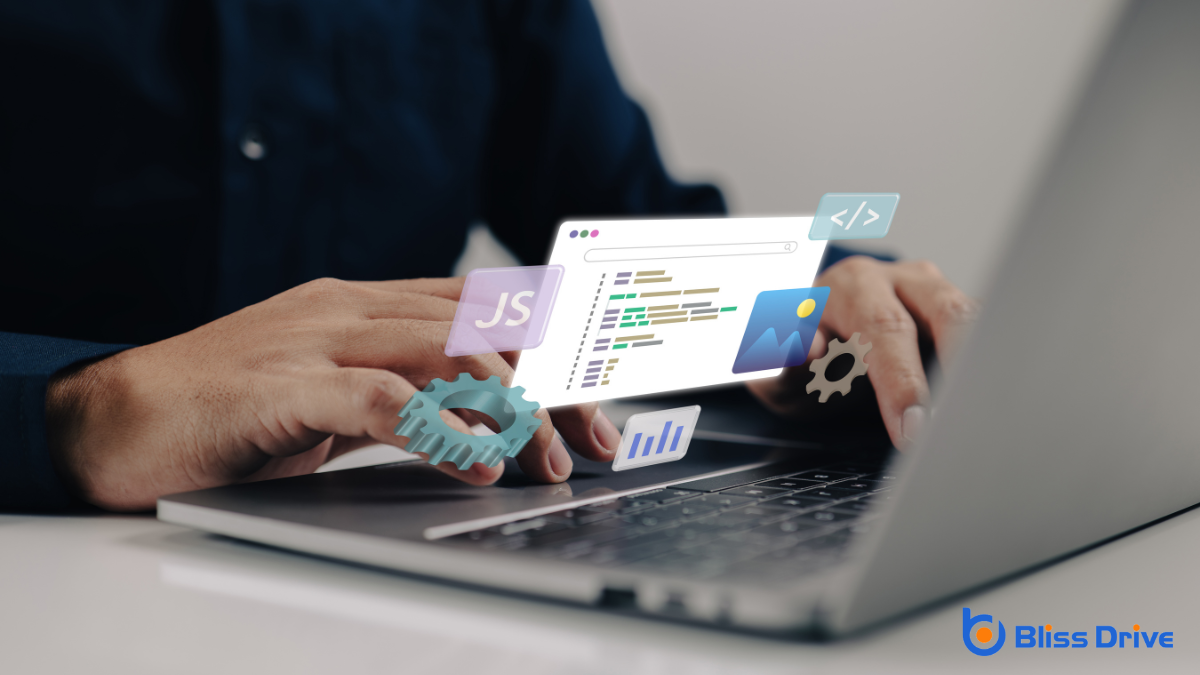
Building on our enhanced design skills, we might wonder if learning to code is the next step in crafting exceptional websites.
Let’s weigh our options to decide if coding fits our goals. Coding can open doors to customization and flexibility, but it's not always necessary.
Consider these points:
To sum up, we don’t need coding skills to effectively use website builders like Wix and Squarespace. Their intuitive drag-and-drop interfaces and customizable templates make it easy for anyone to create a professional-looking site. However, knowing how to code can expand our customization options and improve problem-solving capabilities. Whether we choose to learn coding or not, these platforms provide ample tools to build impressive websites tailored to our needs. Let’s harness these resources and start creating!